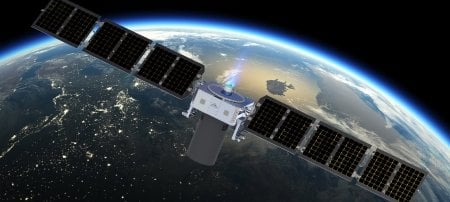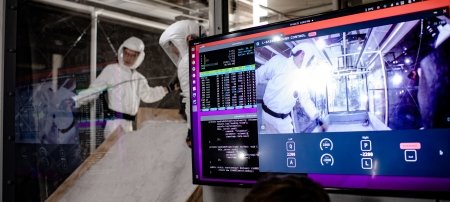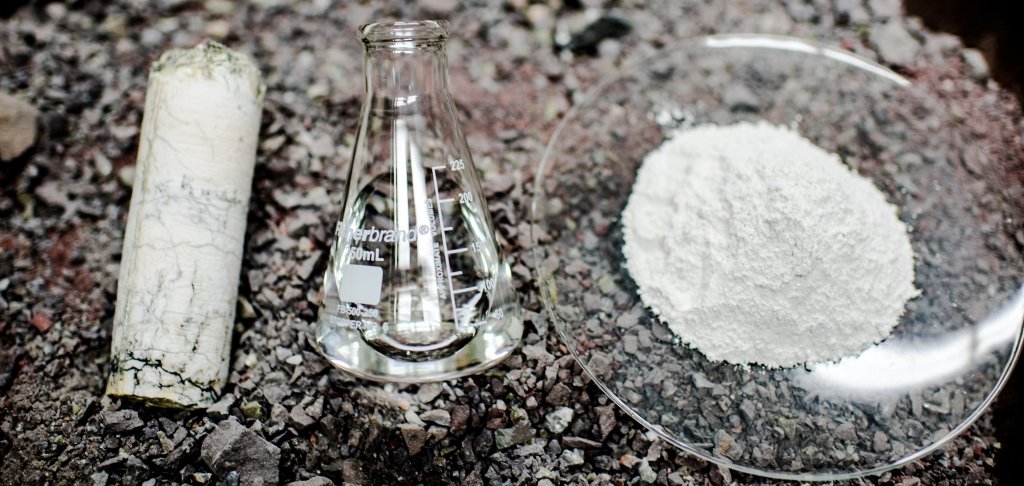Michigan Tech researchers are pushing the limits of space tech to push the boundaries of human exploration.
For decades, putting people on Mars has been one of NASA's loftiest goals. But there are many reasons it's easier said than done. Weight limitations, radiation concerns, fuel availability, and other unknown variables are all hurdles to overcome. At Michigan Tech, a number of researchers are searching for solutions.
The tasks: Find better ways to get people and the systems that sustain them off the planet; pioneer better propulsion systems for satellites, and someday, spaceships; make sure astronauts can get home.
The Right Stuff
The first step toward extended space exploration is getting the people and their equipment off Earth. But the longer the trip, the heavier the suitcase. The journey to Mars will take nine months. That's a lot of pairs of underwear (not to mention water, food, oxygen, and other necessities).
Greg Odegard, the Richard and Elizabeth Henes professor of computational mechanics and affiliated professor of materials science and engineering, says a rocket/person/ lander/equipment/payload could cost as much as $1 million per pound to put a person on Mars.
"It's hard to justify that," he says. "What if we make the payload as light as possible? We can reduce the weight of the materials that we use."
The issue of weight persists, despite decades of research. That's why NASA worked with Michigan Tech to establish a Space Technology Research Institute. Odegard serves as the director of the Institute for Ultra-Strong Composites by Computational Design (US-COMP), a partnership of 11 universities, two companies, and the Air Force Research Laboratory.

The team is working with carbon nanotubes and polymers to create an ultra-light, ultra- strong composite material that possesses a tensile strength stronger than diamonds. However, carbon nanotubes are so small, it's difficult for the polymer to grip them.
"Our job as an institute is to form this material in a better way that will allow us to take advantage of carbon nanotube strength," Odegard says.
But testing the materials is expensive. The workaround is computational modeling.
"We can model these materials at an atomic level on a computer very accurately," he says. "We can predict what their properties would be if we made them in bulk. Computers are relatively inexpensive and fast, so we can predict how the molecular structure affects the properties without going into the lab and making anything."
Odegard says the team is modeling a number of different nanotube-polymer composites, with the intent to provide NASA with three material designs.
"At Michigan Tech, our specialty is computer modeling at the nanometer level. All this is done on Superior, a high-performance computer," he says. "Specifically, we use specialized software packages to simulate the structure, motion, and interaction of the atoms in our material."
During the months Superior is puzzling away, colleagues at other universities take the designs through the next levels of development. The other aspects of the project are training graduate students to become the next generation of aerospace materials researchers and contributing to the Materials Genome Initiative. The initiative takes the computational tools and materials the team develops and makes them available to the public—the more brains working on the issue, the better.
Have Ferrofluid, Will Travel
It's said that the average human interacts with a satellite 36 times daily. Do you check the weather, use GPS to navigate, or send text messages? All these seemingly earthbound activities require space tech.
L. Brad King, the Ron and Elaine Starr professor in space systems, studies new methods of propulsion in space where there isn't much resistance, but there are gravitational pulls, especially for "cube sats" and other small satellites.
"A satellite can't stop at a gas station," King says. "We focus on increasing the fuel efficiency of the engines."

King says currently 25 percent of a satellite's weight is fuel. Ferro fluid thrusters offer a way to bring that down to about 5 percent. Ferro fluid thrusters use magnetic fields to shape a magnetic liquid into a certain geometry, then use electric fields to form a jet of propellant. Several hundred thrusters can fit in an area the size of a postage stamp and can generate enough force for a shoebox-sized satellite. Though ferrofluid thrusters are still in development, this technological advance means a cube sat needs a fuel tank the size of a pack of gum—and saves a satellite mission a million dollars.
Ferro fluid thrusters don't offer much in the way of speed, but they are very efficient for a long time. Satellite missions are often aggregated onboard a single rocket, and tiny satellite hitchhikers aren't necessarily released at the desirable orbiting altitude. Ferrofluid thrusters can be used to move each satellite into its desired orbit and then, once there, extend the mission by fighting drag; what goes up must eventually come down, after all, and that includes satellites.
Once off-world, humanity can only get so far on tanks filled with rocket fuel, so engineering other ways to maneuver in space is essential.
"The engines we work on have high fuel efficiency, but very low thrust," King says. "Physical laws prohibit both. We can go a long way on a little propellant, but it would take a long time."
It's Rock(et) Science
Though accounting for the variables of a mission to Mars would make even the most experienced project manager's head spin, the true challenge isn't getting there, but getting back. And few astronauts are willing to share Matt Damon's experience in The Martian. One solution is to carry only enough fuel to get to Mars, and rely on robots and rocks to have enough fuel ready and waiting for the trip home, says Paul van Susante, a senior lecturer of mechanical engineering and co-principal investigator on a NASA Early Stage Innovation grant.
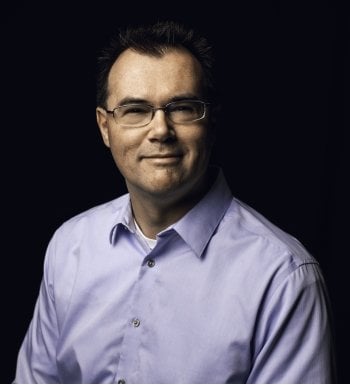
By combining hydrogen atoms mined from the water in gypsum on the red planet with atmospheric carbon dioxide, van Susante proposes that robots could manufacture methane for rocket fuel on Mars in advance of a human mission. In a controlled environment, robots could excavate a soft rock like gypsum, blasting it with water jets to break the rock into smaller pieces and heating it, a process which releases the bound water from the mineral. This method complies with planetary protection mandates and avoids wear-and-tear on excavation machinery.
By the numbers, van Susante calculates that filling a fuel tank would take 16 metric tons of water gathered during 480 Mars days—33 kilograms a day—combined with 19 metric tons of atmospheric carbon dioxide to generate methane, with liquid oxygen as a handy byproduct. The time span would provide engineers on Earth enough time to confirm a fuel tank has been filled before sending a human mission to the red planet.
"It's not rocket science, but it is rock(et) science, because we can make rocket fuel out of rocks," he says.
From a Galaxy Far, Far Away
Physics researchers Petra Huentemeyer, associate professor, and David Nitz, professor, examine cosmic events far beyond our solar system. Their contributions to the High-Altitude Water Cherenkov (HAWC) and Pierre Auger collaborations were published in three articles this past fall, all in the journal Science.
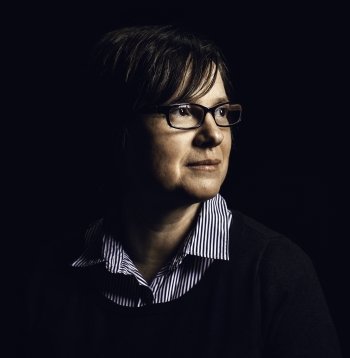
Huentemeyer, together with Hao Zhou '15, who now works at Los Alamos National Laboratory, looked at the possible origins of dark matter. They worked on a new particle diffusion model and calculated the gamma-ray emission morphology, which helped the HAWC Gamma-Ray Observatory rule out the Geminga pulsar pair as the source of positron excess. While the results in their Science paper do not affirm the detection of dark matter, they do confirm that positron excess measured by the observatory is not explained by a pulsar nebula throwing off the particles.
"There are all kinds of efforts all over the globe to detect dark matter directly," Huentemeyer says. "Dark matter is difficult to detect. Dark matter is elusive. We don't see it."
She explains that the reason we think it exists is because taking what physicists know about gravitation and then looking at the velocity of stars traveling around the center of disk galaxies, they are not traveling at the speeds we expect from visible matter. There must be dark, non-light emitting mass somewhere that causes this.
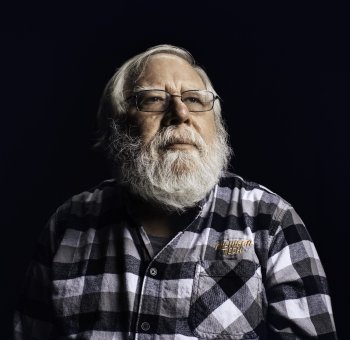
In another galactic mystery, Nitz and collaborator Brian Fick, another physics professor at Michigan Tech, contributed to the resolution of the 50-year-old question about whether cosmic particles travel from outside the Milky Way galaxy. Understanding cosmic rays and where they originate can help us answer fundamental questions about the origins of the universe, our galaxy, and ourselves. A collaboration of researchers at the Pierre Auger Observatory discovered the particles' origin is much farther than the Milky Way.
Nitz works on the electronics that record the signals in the water tanks at the observatory, which is made up of an array of 1,600 detectors spread across 3,000 kilometers in Argentina. He has written the code that is programmed into the circuits, which converts the Cherenkov light in the water tank detectors into digital signals. This enables the hardware to make rapid decisions about the signals recorded in the tanks and whether they're worth further analysis.
"I really enjoy this kind of science. But I'm a hands-on guy," Nitz says. "I visualize how we go from concept to actually building an instrument so we can address that science."
Michigan Technological University is an R1 public research university founded in 1885 in Houghton, and is home to nearly 7,500 students from more than 60 countries around the world. Consistently ranked among the best universities in the country for return on investment, Michigan's flagship technological university offers more than 185 undergraduate and graduate degree programs in science and technology, engineering, computing, forestry, business, health professions, humanities, mathematics, social sciences, and the arts. The rural campus is situated just miles from Lake Superior in Michigan's Upper Peninsula, offering year-round opportunities for outdoor adventure.


